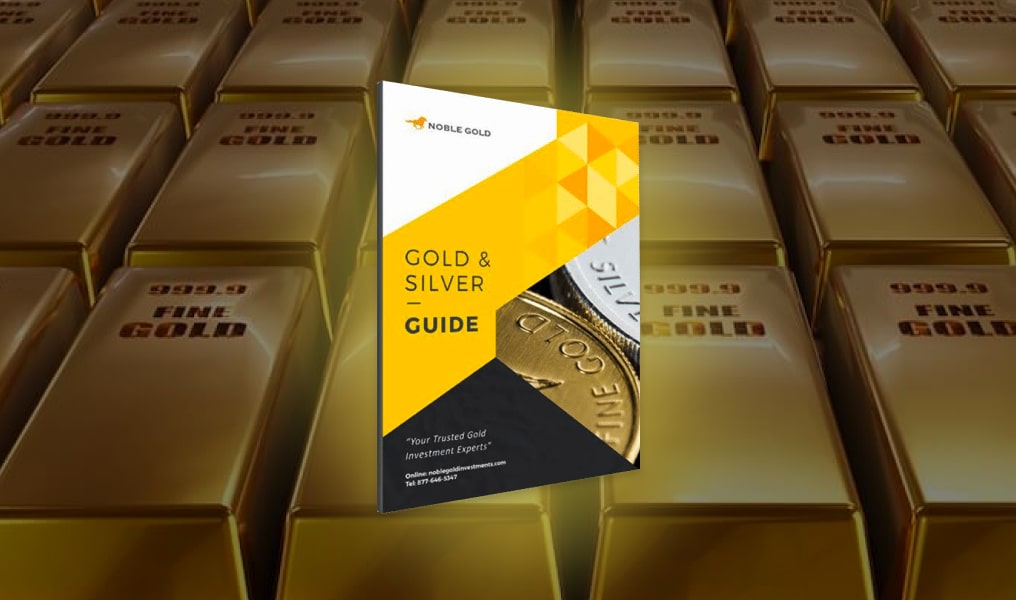Navigating the increasingly more complex world of finance often requires understanding the complex relationships between various economic indicators. One such fascinating relationship is between the U.S. Dollar Index and the price of gold. The delicate dance between these two financial indicators often reflects global economic trends, investor sentiment, and market volatility, offering valuable insights to those seeking to understand the financial landscape.
If you’re looking to make a difference in your financial future, understanding the correlation between the U.S. Dollar Index and the price of gold can provide valuable insights to guide your investment decisions.
The U.S. Dollar Index Explained
The U.S. Dollar Index (USDX) is a benchmark index that measures the value of the U.S. dollar relative to a basket of six major foreign currencies. The currencies include the euro, the Japanese yen, the British pound, the Canadian dollar, the Swedish krona, and the Swiss franc.
Understanding The U.S. Dollar Index
The index was created in 1973 by the Intercontinental Exchange (ICE) to provide a comprehensive and objective measure of the dollar’s strength in the global economy. It’s calculated using a geometric average of the exchange rates of the six major currencies. These currencies are weighted based on their importance in international trade and finance, with the euro having the largest weight of 57.6%.
The base value of the U.S. Dollar Index was set at 100 in 1973, which means that any value above or below 100 indicates the percentage change in the dollar’s value relative to its starting position. For example, if the index is currently at 110, the dollar has appreciated by 10% since 1973. Conversely, if the index is 90, the dollar has depreciated by 10%.
Why The Dollar Index Is Important
As a measure of the dollar’s value against a basket of six major world currencies, the dollar index provides important insights into international money flows and economic health. Investors, traders, and policymakers widely use the U.S. Dollar Index to monitor the dollar’s performance in the global economy.
A strong dollar can boost U.S. exports and reduce inflation, while a weak dollar can make imports more expensive and raise inflation. Therefore, changes in the U.S. Dollar Index can have significant implications for the global economy and financial markets.
Factors That Influence The U.S. Dollar Index
Interest rates, which the Federal Reserve sets, heavily influence interest rates. Higher interest rates make dollar-denominated assets more attractive, increasing demand for the dollar and raising its value. Robust economic performance indicates a healthy economy and can strengthen the dollar by attracting foreign investors.
Government policy, both fiscal (taxation and public spending) and monetary (controlling the money supply and interest rates), also influence the dollar index. Thus, expansionary policies can lead to a weaker dollar due to the potential increase in inflation, while contractionary policies can strengthen the dollar by containing inflation.
The dollar index influences the political and economic outlook and the U.S. trade balance. Political stability and positive economic forecasts can affect demand for the dollar, while the trade balance – the difference between exports and imports – can affect the dollar’s strength. Understanding these influencing factors can help investors make informed decisions in the dynamic currency market.
Gold Prices And The U.S. Dollar Index
Gold, a precious metal with a rich history, is a unique asset with a special place in the financial world. The price of gold doesn’t just reflect its physical attributes, the global economic climate, and investor sentiment.
The Role Of Gold In The Global Economy
Gold offers investors a way to diversify their portfolios and mitigate risk. Since the price of gold often moves in the opposite direction to stock prices, owning gold can help offset losses during a downturn in the stock market. Additionally, gold is very liquid, meaning it can be easily bought or sold, which adds to its attractiveness as an investment.
Aside from personal gain, central banks hold gold as part of their reserves worldwide. These holdings help support the value of their respective currencies and provide a buffer against economic risk. Central banks also buy and sell gold as part of their monetary policy strategies, which can affect the price of gold in the global market.
Gold is also used in a variety of industries. Its excellent conductivity makes it an important component in electronics. Its resistance to bacteria and corrosion makes it valuable in dentistry and medicine.
Relationship Between Gold Prices And The U.S. Dollar Index
Generally, there’s an inverse correlation between the dollar index and the price of gold. When the U.S. dollar index rises, gold prices tend to fall; when the index falls, gold prices often rise.
The U.S. dollar index measures the value of the U.S. dollar against a basket of foreign currencies. When the dollar is strong, gold becomes more expensive for foreign investors, which can reduce demand and lower gold prices.
However, this relationship isn’t rigid and can be affected by other factors such as interest rates, inflation, and economic uncertainty. For example, gold can become an attractive investment opportunity during high inflation or low interest rates, which can drive its price. Similarly, in times of economic uncertainty, investors often turn to gold as a safe haven, which can increase demand and drive up the price of gold, regardless of the performance of the U.S. dollar index.
Examples Of The U.S. Dollar Index And Gold’s Prices Correlation
The relationship between the U.S. Dollar Index and the price of gold has been demonstrated numerous times throughout history.
The 2007-2008 Market Crash
Another example was the global financial crisis of 2007-2008, which was one of the most severe economic downturns in modern history. It started in the United States with the housing market’s collapse, which triggered a chain reaction that spread worldwide. As the crisis deepened, banks and financial institutions began to fail, credit markets froze, and unemployment rates skyrocketed.
Gold emerged as one of the most popular safe-haven assets during this period. As a result, demand for gold surged, and prices reached record highs. The price of gold increased by over 150% between 2007 and 2011, peaking at $1,921 per ounce in September 2011.
COVID-19 Pandemic
In March 2020, at the onset of the COVID-19 pandemic, a rush to liquidate assets for cash led to a brief spike in the U.S. Dollar Index. During the same period, gold prices initially fell due to the sell-off. However, as the pandemic continued and economic uncertainty rose, investors flocked to gold as a safe haven.
At the start of 2020, gold was priced at around $1,520 per ounce. However, by August 2020, amid the ongoing pandemic and resulting economic uncertainty, the price of gold had skyrocketed to over $2,060 per ounce, marking a record high. This represented an increase of over 35% in just eight months, underlining gold’s appeal as a safe-haven asset during economic instability.
Navigating Currency Fluctuations In Precious Metal Investments
Remember that managing risk and taking advantage of opportunities requires careful thought and planning. By following the tips below, you can protect your investments while taking advantage of the opportunities the gold market offers.
- Diversify your portfolio using a mix of assets, including stocks, bonds, real estate, and gold.
- Stay informed about global economic and political events that could affect the price of gold.
- Set clear financial goals and develop a strategy for investing in gold that aligns with your goals.
- Consider using dollar-cost averaging to invest in gold over time rather than trying to time the market.
- Keep an eye on inflation rates, as gold is often considered a hedge against inflation.
- Review and reevaluate your investment portfolio regularly to ensure it is balanced and meets your risk tolerance.
- Consider working with a financial advisor or gold investment expert who can advise you based on their knowledge and experience in the industry.
Hedge Against Market Fluctuations And Invest In Precious Metals Today
The correlation between the U.S. dollar index and the price of gold can seem complex, but with the right guidance, it becomes an opportunity rather than a challenge. Whether you’re a seasoned investor or a novice, SpaceXgold can help you use this dynamic to your advantage.
We offer a range of investment options to suit your needs. If you prefer a tangible asset, you can purchase physical gold bars and store them at home. Alternatively, for a more direct approach, you can invest in a Precious Metals IRA, a self-directed Individual Retirement Account backed by physical gold and other precious metals.
Give us a call at . or click here to open an account with SpaceXgold and start your journey towards more strategic and informed investing. Our representatives are standing by, ready to answer any questions you may have.






